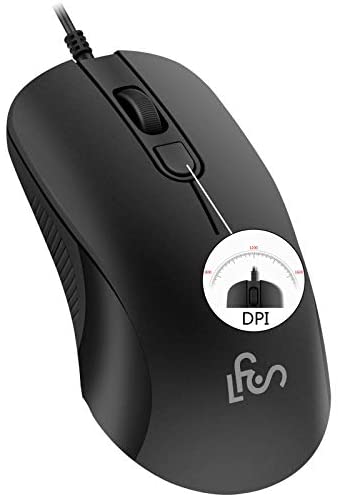Challenges like climate change and dwindling natural resources and can make the future seem uncertain and even scary. But our fate isn’t sealed so long as scientists around the world have a say. They’re busy dreaming up technologies, from the practical to the zany, that could make the future a little brighter.
Prototypes for Humanity, a Dubai-based organization that runs a contest to spur innovation, has highlighted 100 projects in 2023 that they believe could change the world — from electrical skin to devices that predict air pollution without any air sensors. Here are some of our favorites.
Real-time monitoring to predict natural disasters

NatCat aims to use satellite imagery, remote sensing and machine learning to assess the risk of natural hazards in different locations, which could help to reduce the risk of harm for those living there. The tool generates risk assessments for any location in the world, regardless of the availability of local data. It can also use climate change data to project the frequency and intensity of some natural hazards in the future.
Converting air humidity to electricity

This project, called Electric Skin, creates a self-powering biomaterial for electronic devices that harnesses the electrically conductive properties of the mud-dwelling bacteria known as Geobacter sulfurrenducens. Specifically, the bacteria’s protein nanowires can generate electricity from the air’s ambient humidity. The scientists have extracted the bacteria’s DNA and embedded this into E. coli for production. To create the power source, the team placed the nanowires harvested from E. coli into compostable biomaterials to create a flexible and textured membrane that can power electronic devices from the air and water.
Recycled tiles that regulate heat and humidity

Spurred by the excessive production of non-recyclable plastics alongside the effects of climate change in south India, Wastly Roof Tiles aims to replace conventional roof tiles with tiles made of a recycled material that can reduce indoor temperatures.
These tiles, which are created by shredding and melting multi-layered plastics, are lightweight and waterproof and can reflect heat. This project is inspired by the cryosphere — icy parts of Earth that regulate the planet’s temperature — and the finished product incorporates a blend of the blue and white that many might associate with these regions.
Phytoplankton-based carbon capture

Phytoplankton transfers 40% of the carbon dioxide in the atmosphere to the ocean using photosynthesis. With PhytoMat, scientists now want to harness this natural process on an industrial scale.
PhytoMat is a flexible, carpet-like technology that is installed horizontally and vertically on surfaces and contains recycled materials embedded with live phytoplankton. As they grow, they absorb carbon dioxide from their surroundings and convert that into biomass — organic material that can be repurposed — before it’s harvested and delivered to recycling plants. This material can then be transformed into new products, like bioplastics.
Electricity-free medical injection in disaster recovery

(Image credit: Yujin Chae)
Using only air pressure and the elasticity of balloons, Golden Capsule is a device that can administer intravenous drugs without the need for another human to hold a medicinal pack.
This project stands apart from other devices because no electricity is needed — making it ideal for use in disaster recovery scenarios. Golden Capsule uses elastic force and air pressure differences to deliver medicine, rather than gravity, which is used in other non-powered or low-powered systems.
The biodegradable polystyrene replacement

Carbon Cell is a biodegradable expanding foam made from biochar — a secret combination of biological ingredients derived from food waste — that’s mixed and expanded using a patented manufacturing process.
The process is similar to injection molding and enables many different shapes and sizes to be formed quickly when, say, packaging items. The scientists behind this technology ultimately want to replace polystyrene, which they said is toxic and harmful to the environment.
A graphics card that can slash AI’s carbon emissions

Generative AI models need to be trained in massive data centers, normally using the power of specialized graphics cards (GPUs). This means generative AI has a huge carbon footprint. But Tasawwur D310 is a GPU that its creators say is vastly more energy efficient than today’s leading GPUs. The chip is super dense — with electronic components fitted much closer together and stacked on 10 layers (versus two layers in one of the leading competitors, Nvidia’s, chips) — meaning data is exchanged much faster, saving energy and speeding up the training process.
Programmable soft robotics

FlowIO Platform claims to be the world’s first general-purpose way to make prototypes of soft robotic parts. This tiny device includes integrated pumps and batteries, and it features five programmable ports, which users can manipulate through a web browser via a Bluetooth connection. Each port can inflate, vacuum, release, hold, sense pressure and alter flow rates. This device also features onboard batteries and 10 different sensors. Its creators say it’ll enable robotics experts to bring their ideas from conception to reality much faster than before.
Mixed-reality building inspection with drones

FlyVision combines mixed reality with drone flight to help drone users inspect buildings and other spaces more effectively. Using Microsoft’s HoloLens 2 augmented reality (AR) headset, the system gives drone pilots the tools to scan immediate surroundings and create a 3D digital twin within the system. They could then plan a path inside the space and use the planned path to guide a drone through its environment.
AI-augmented renewable energy

This software platform, called “Renescout”, uses data mining, remote sensing and AI to better assess whether renewable energy projects are worth pursuing — a process that normally takes 18 months. “Go” or “no” decisions can effectively be made without investing additional time and resources into exploring the viability of unearthing prospective renewable energy sources, the company claims.
Detecting microplastics with high-tech imagery

SPLASH is a system that uses an advanced form of imaging to detect microplastics in water and the air. The imaging, called intelligent polarization holographic probing, works using light-based scanning and 3D modeling to establish the presence of microplastics that can’t be seen by the naked eye.
Sustainable solid-state batteries

These batteries are made from copper, aluminum and a sodium-based solid-state electrolyte. These novel materials work as both current collectors and electrodes. The battery’s coaxial architecture and beam-like structure enable it to retain energy while reducing wasted space and material. The makers of the batteries, dubbed Ferroelectric Electrolyte Batteries, say they are non-flammable and sustainable alternatives to today’s lithium-ion batteries. The researchers imagine they could serve in a variety of uses in the automotive and aerospace industries.
AI feedback to improve surgery outcomes

This AI system, called Surgical AI Trainer, assesses the performance of surgeons and offers feedback on how they can improve their technique. When looking at video recordings of procedures, the system analyzes various components of the operation, such as the intricate movements the surgeon performs. It offers precise and quantified feedback — citing particular segments of the video alongside a rationale for picking it out — on how a surgeon performs in the operating theater. This reduces the need for subjective feedback from an expert peer, which can be laborious.
3D scanning with advanced laser-based radar

The MindPalace-360 is a machine that uses advanced algorithms and 3D reconstruction tools to generate a photorealistic digital render of a real-world environment. Built primarily for those in architecture, construction or engineering, this system essentially creates digital twins that are incredibly close to the real thing. It lets users capture, process and visualize spatial data much more accurately, which feeds into better design and planning.
Extending lithium-ion battery life

Lithium-ion batteries in products like laptops or even electric cars tend to have charge limits to extend the batteries’ longevity. But many e-mobility systems, like e-scooters, lack these controls, which could lead to more e-waste generation as batteries degrade quickly and need to be thrown out much sooner than they should have been. BetterE implements charge limits on the AC side of a charger for electric vehicle lithium-ion batteries. For drivers, this would reduce the operating costs of their electric vehicles while also reducing e-waste on a broader level.
Real-time air pollution monitoring

Data2Action uses AI algorithms to monitor air pollution in real time — even if the area has no air sensors. The system takes monitoring data from areas that have sensors installed, and then uses this to extrapolate information and determine predicted air pollution readings in places that don’t have sensors installed. The machine learning models also predict potential health outcomes based on air pollution exposure levels, its makers say.


